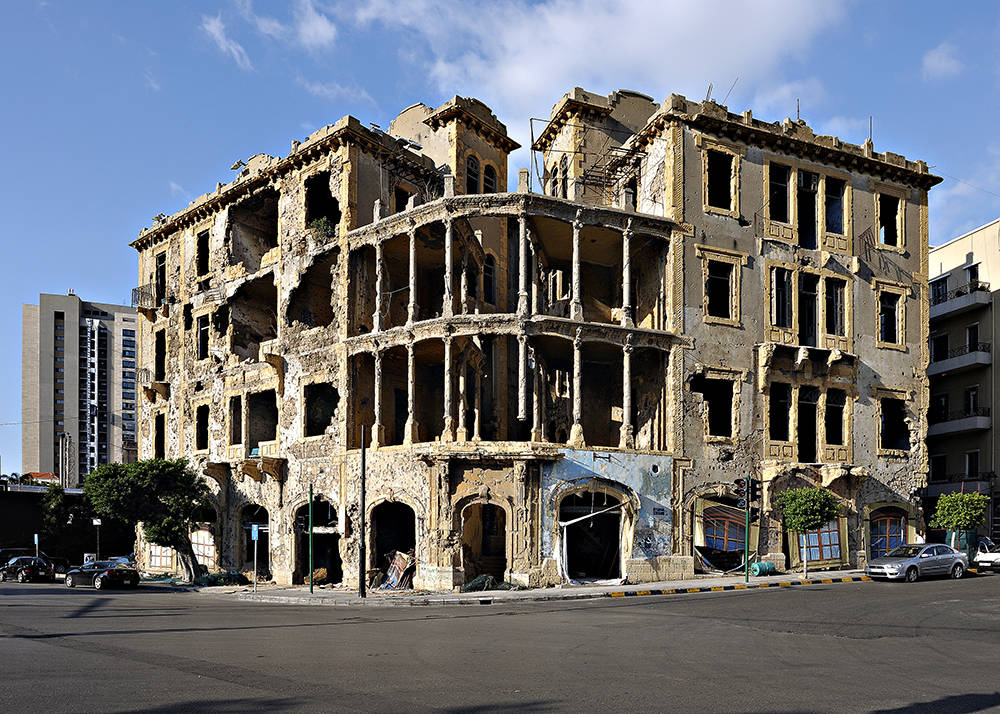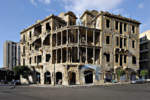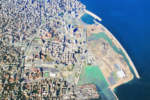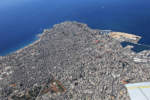Charbel Maskineh-Nicola Santini: Which tools, strategies and structure has the Municipality for the urban management and the future development of the city of Beirut?
Nadim Abourizk: When I stepped into the Municipal Council, and being an architect and experiencing architecture, I thought that the Municipality of Beirut should have an urban planning committee, which it has never had before. We created a steering committee composed of professional, university professors and experts in the field of Urban Planning. The first task on our plate was the need to have a future vision for the City of Beirut. During the brainstorming sessions we decided to create five sub-committees to tackle five major challenges: first one was the initiation of a Strategic Plan for Beirut. The second sub-committee was for the preservation of the heritage. The third is to tackle Undeveloped Sectors in the city, where there is a great opportunity and chances to develop and evolve them into new neighbourhoods. Fourth and fifth tasks are Mobility and Open Spaces.
C.M.-N.S.: There are many decay and problematic areas scattered in the city, such as the former train station, the river of Beirut etc. any future vision is taken from the municipality regarding these areas?
N.A.: We started by a case study neighbourhood which is the Medawar-Quarantine. It is a purely industrial zone next to the port and at the entrance of the city of Beirut coming from the East. A diagnostic study of the area and in collaboration with the Lebanese University will start soon and this study will be the base for a future Master Plan of that area.
C.M.-N.S.: What is the future vision of the municipality toward the urban transformation in terms of heritage and public spaces?
N.A.: We strongly believe in the collaboration with other cities and with the benefit of the exchange of experiences. As for the heritage and environment we have a fruitful collaboration with Region Île de France and Ville de Paris and hopefully soon with the City of Marseille and with Istanbul. Ville de Paris is giving us technical assistance for the reconstruction of Beit Beirut Museum. The City of Marseille agreed to help us in the implementation of a Strategic Plan for Beirut. With Region Ile de France we are working on several master planning projects: the green master plan of the whole city of Beirut, the soft pedestrian link or ‘Liaison Douce‘ project which is currently is the design phase.
The idea is to create a soft link from the Pine Forest all the way to the downtown area passing through Damascus Street providing cycling, public transportation, and pedestrian walkways. This is a pilot project in the city and the first phase of design has already been validated and hopefully very soon we can proceed with the next phases of the project.
The Liason Douce will connect the National Museum next to the Hippodrome, Beit Beirut Museum and the Archaeological Museum which is planned in Solidere area.
C.M.-N.S.: Which are the most important ongoing projects for green urban areas?
N.A.: We have a very important opportunity in Beirut which is the Hippodrome. It is a land of 200,000 square meters including a hippodrome building which was hit during the war. It is an important landmark and constitutes part of the heritage of the city. During war time the Israeli Army occupied the land and they demolished the whole structure and burned all the pine trees.
They left us with a land that has no more pine trees except for a few and a downgraded building, which used to be an architectural landmark of the Ottoman era. With this background, we thought we should take the lead and have a daring and strong vision on how to develop this facility. Our intention is not to keep this land closed for the public and only used once every week for the racing activity. We decided to transform this land into a Central Park while maintaining the horse racing activity, upgrading it to comply with international standards and norms. At the same time, follow the trend which has been implemented all over the world, creating other activities into that land to be used by all inhabitants of the city. We envisaged a park with no construction basically, but enjoying environmental, ecological, leisure, and touristic activities within in the center of Beirut. This area relates very well to the Horsh Beirut - Pine Forest, a land of 400,000 square meters which is next door.
They are only divided by Boulevard Omar Beyhum. Historically it was one huge green lung of the city of Beirut. The caravans used to pass through the park and with time this caravan lane was transformed into a high speed boulevard. Our objective is to open this green land again to everybody in the city.
In collaboration with Region Île de France a Master Plan study for the hippodrome will be carried out by initiating an international competition for the design. On the other hand, we have several major gardens in the city and other smaller open spaces. Our objective is to upgrade those gardens. Three renowned landscape architects were selected to redesign the three major gardens: Sioufi Garden by Vladimir Djurovic, St. Nicolas Garden by Frederic Francis, and Rene Mouawad Garden- Sanayeh by ZMK Zeina Majdalani .The three of them agreed to donate free of charge the design and supervision of the gardens. This complies with my intention when I started my duty as a Vice President in The Municipality of Beirut - Promote quality into the public sector.
area 120
| Beirut









